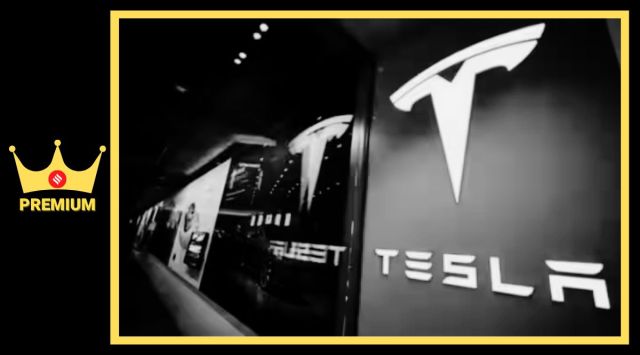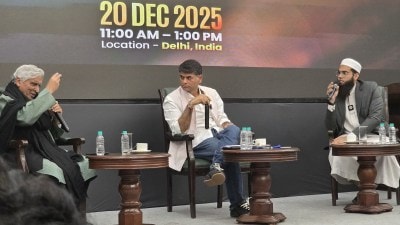While the specific details are still under wraps, what is clear this time around is that the American carmaker has communicated a change in stance: diluting its demand for an upfront cut in import duties as a precondition to considering manufacturing in India, while seeking sops for some degree of import from its massive Shanghai facility and the upcoming gigfactory in Berlin. While conceding that entry of a marquee name like Tesla could be a catalyst for India’s nascent electric four-wheeler push, Government officials across ministries are categorical in their assertion that nothing has changed when it comes to New Delhi’s position on Tesla’s proposed India entry and that there cannot be a special tax dispensation only for one carmaker. A final decision by Tesla could be contingent on other concessions that the EV major is now lobbying for, but there could be three key reasons why the case for an India entry could be far more compelling for the Austin, Texas-based electric vehicle maker this time around.

The “Model 2”
One reason is that Tesla is currently working on a new low-cost entry-level model that is unofficially being badged the “Model 2”, with prices likely to start at a little over $20,000 and that could hit the market over the next 24 months. Tesla has released a preview image of this car, which is set to rival the BMW i3 and the upcoming Volkswagen ID 2.
Speaking at the carmaker’s 2023 shareholder meeting in May, Musk confirmed it is developing “two new products”, tipped to be the new entry hatchback and a possible refresh of the Tesla Model 3 (Tesla’s cheapest car currently that starts at around $38,000). The new entry-level car is likely to sit below the Model 3 sedan and it was reported in March that Musk said there is a clear path to delivering a car “that costs half as much to build” as the Model 3. The two new cars “will probably make in excess of five million units a year” of combined production volume, said Musk, alluding to a strategic shift from being a niche carmaker to a mass-market EV manufacturer.
Incidentally, the new announcement comes close on the heels of Tesla cancelling the right-hand-drive versions of its higher-end Model S and Model X, citing the mechanical complexities added by the conversion. The Model 3 saloon and its Model Y mini-SUV are Tesla’s bestsellers, accounting for over 90 per cent of production.
The prioritisation of its new small car is also important for the electric carmaker because some of its other major projects are struggling: the Cybertruck, the new Roadster, Robotaxi and the Semi truck have struggled to reach production levels of any scale despite having been announced several years ago. So, this small car push makes it imperative for Tesla to look at both a low cost production hub and a mass market for an EV product that would be considerably cheaper than anything the company has produced so far. India checks the boxes on both counts.
China woes
Once wooed by Beijing to catalyse the development of a domestic electric vehicle industry, Tesla is now struggling in the world’s biggest auto market as it no longer seems to be holding on to its privileged position in China. Tesla, which makes around half its total production of cars at its mega Shanghai factory, was allowed to set up without the mandatory Chinese joint-venture partner required of other foreign carmakers. But that was when Beijing needed Tesla to encourage China’s own budding EV industry to attain global competitiveness. And Tesla made a roaring debut. But now, according to data from China Merchants Bank International Securities quoted by The Economist, Tesla’s market share may have slipped below 14%, from 16% in the preceding quarter, as Chinese buyers switched to home-grown brands such as BYD, Li Auto, XPENG and Nio Motors. In a clear sign of how the tables have turned, Tesla was asked to sign a pledge on July 6 with Chinese carmakers to stop its price war with local upstarts and compete “fairly” in line with “core socialist values”. The pushback from Chinese authorities is being read as an overt signal that the honeymoon period for Tesla is conclusively over and that the tables may have turned somewhat, now that Chinese EV start-ups have scaled up operations. The message is that at this point in time, Tesla needs China more than the other way around. And so, from the carmaker’s perspective, an entry into another big market, especially as its first mass car project is getting off the drawing boards, makes imminent sense, both as a hedge to its market risk and as a gamble for the future. India is already the world’s third largest car market, with the auto sector contributing nearly 6% to India’s GDP and 35% of the manufacturing GDP. More importantly, the Indian EV market is expected to grow at a CAGR of 49% between 2022-2030 and is projected to hit 10 million-unit annual sales by 2030. Even if that is an optimistic estimate, there is undeniable potential for any maker of EVs in India, especially given that New Delhi is overtly promoting the Battery Electric Vehicle category (the class that Tesla’s cars are bucketed in) with heavy tax incentives that are not available for other ‘green’ categories of vehicles.
Story continues below this ad
Redoubled self-driving push
Every single year since 2014, Musk has promised that the Austin-based carmaker will get its self-driving technology road-ready, with a definitive time-frame for this upshift in passenger car technology. And each of these last eight years, what is evident is that self-driving continues to be as elusive for Tesla, as it is for a bunch of other carmakers in the fray that aim to put passenger cars on the roads without anyone behind the wheels.
In what is being seen as a fresh salvo, Musk said the carmaker plans to invest more than $1 billion on its so-called Project Dojo – an in-house supercomputing project – by the end of 2024. He told investors on July 20 the supercomputer is being designed to handle massive volumes of data, especially video feed from Tesla cars needed to create the autonomous-driving software that would drive Autopilot, its camera-based driver-assistance system. “We will be spending well over $1 billion on Dojo” over the next year, he said during the call with analysts.
Now, key to this Tesla’s ability to build on a “staggering amount” of video at its disposal, primarily on account of its customers’ use of Autopilot and a feature marketed as Full Self-Driving Beta, which according to estimates has driver-contributed data of some 250-300 million miles of actual road driving. The company said in its latest earnings release that it had begun production of its Dojo training computer.
There are typically five levels in the evolution of autonomous driving: each level describing the extent to which a car takes over the responsibilities from the driver, and how the two interface. So, the levels range from 0 to 5, progressively defining their relative extent of automation. Level 0, “No Automation”, is where the driver controls the car without any support from a driver assistance system – the case for most cars on the road currently.
Story continues below this ad
The driver assistance systems of level 1, like adaptive lane assist or parking assist, are already being offered in a number of top-end cars, while level 2 is a further upgrade that was available only across some models of premium car makers such as steering and lane-keeping assist and remote-controlled parking – examples include Tesla’s Autopilot and BMW’s ‘Personal CoPilot’.
Level 3 is where it starts to get tough for carmakers – who have to offer an even greater array of “automated driving” tools where the driver can partly take his eyes of the road, while level 4 stands for “Fully Automated Driving”, where the driver can take his hands off the steering wheel for most of the drive. Level 5 is “Full Automation”, where the car can drive without any human input whatsoever. All of these are still in the testing phase and that’s where the projections made by Musk and other self-driving proponents have to do more of the walking-the-talk. Level 4-5 is what Tesla and the others are striving to achieve.
Ever since Musk first made his claim over a decade ago, Tesla had been working on its driver assisted technology since then, even though success has been patchy. Problems ranged from jumping red lights, the system not recognising pedestrians to situational problems like identifying a cyclist who briefly disappears behind a parked vehicle. Ultimately, Tesla began beta testing its full self-driving system only in 2020. But there’s a catch with Tesla’s beta testing: it is doing the testing with regular people driving their Tesla cars on public roads, with each of these drivers having forked out an amount of $12,000 for the privilege of doing so.
Google’s Waymo and Cruise owned by General Motors are among companies that predicted they’d have full self-driving cars by 2020, with only limited success: that too limited to ring fenced, geotagged areas. But none of them are anywhere close to reaching level 5.
Story continues below this ad
Clearly, developing full self-driving cars is way harder than carmakers initially thought. Also, there is the continuing debate on the technology of choice: cameras vs a combination of technologies that include lidar, radar, sensors and camera. While Tesla is relying primarily on cameras, most other car models depend on multiple sensors to feed information into onboard computers, which expends huge amounts of processing power to map what’s going on and forecast what might happen next. While it is easy for humans to do this kind of prediction based on situational awareness, this can present a complex problem for computers, such as when someone at the side of the road steps off the pavement and disappears behind a parked van for a minute or distinguishing between a red signage on a wall versus an actual stop sign. In the first instance, a human driver might anticipate that the person behind the van could emerge from the other side and step out onto the road. But for a computer, this predictive capacity is still work in progress. For self driving to work in a country like India, where traffic is extremely haphazard, it will be an even tougher task.
In 2022, eight years after his first prediction, Musk highlighted the real scale of the problem – that to solve full self-driving, the issue of a mastery over real world AI is a must. The rapid advances being made in large language models is a somewhat positive sign, going forward. But all the information the car will need to drive properly has to be aggregated by sensors or cameras and then fed into the computer for it to learn from it, which is possible only with increased autonomous driving miles. And the more the data, and more varied the data, the better it is to train the system.
So, the incorporation of project Dojo and dovetailing it with Autopilot now holds the key, in making sense of all that driving data captured by cars running in real-life conditions.
The scale of the market potential apart, the addition of driving data from India – considered one of the most challenging environments for autonomous driving – to Tesla’s 250-300 million miles of data could potentially be a very valuable inclusion to its AI-based training system. To that extent, an India entry appears to be yet another favourable factor for the EV maker that is increasingly looking to graduate from being an EV maker to an autonomous driving company in double quick time.

































